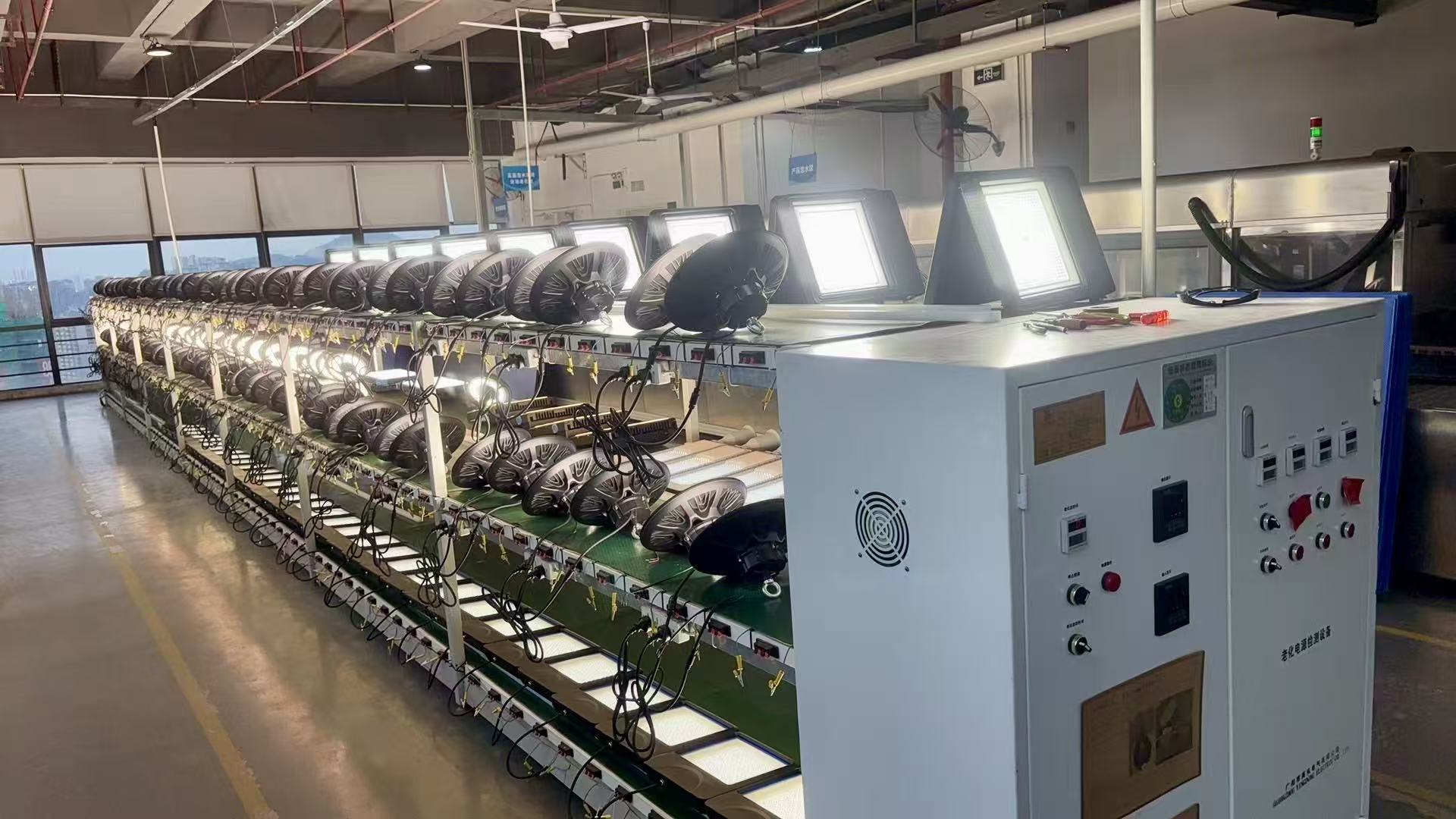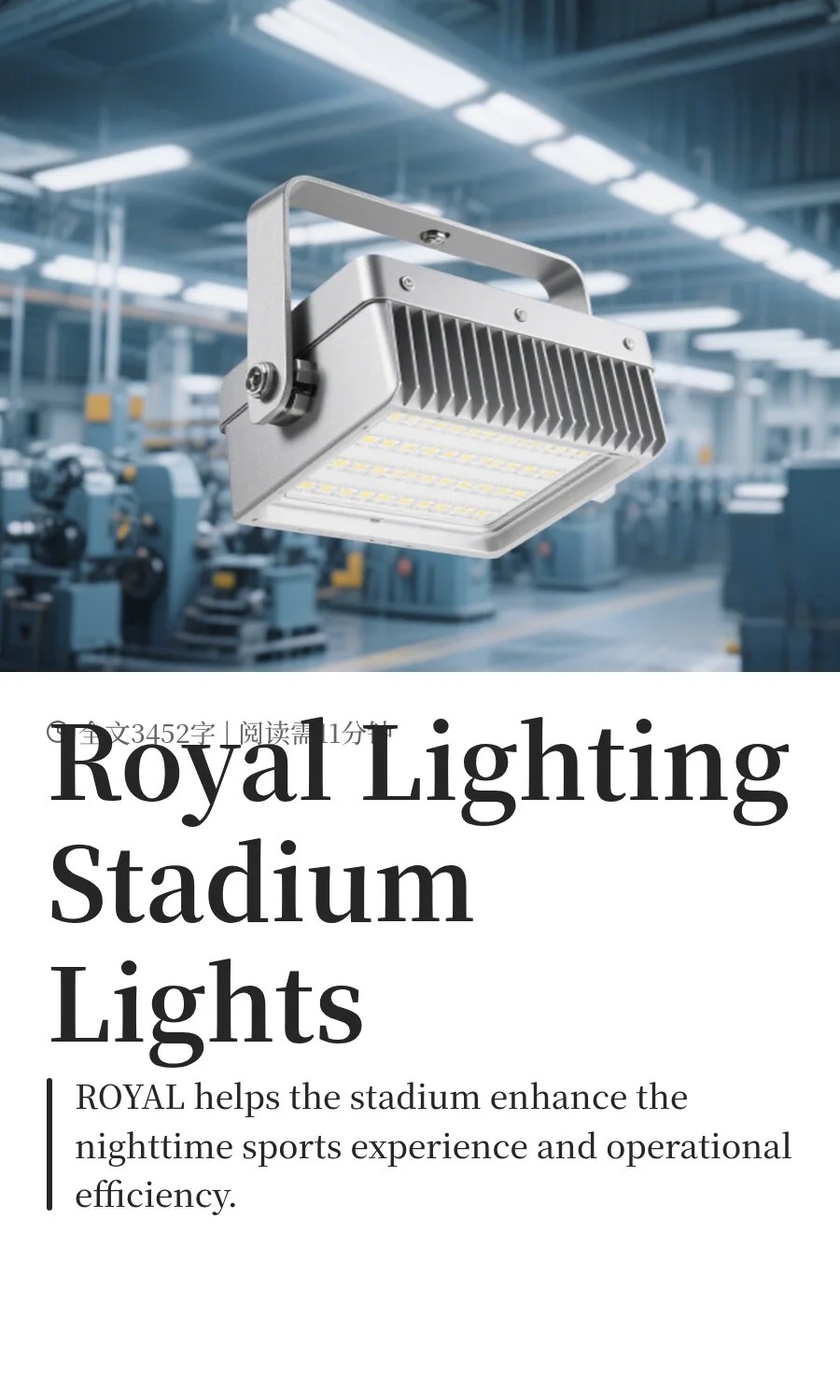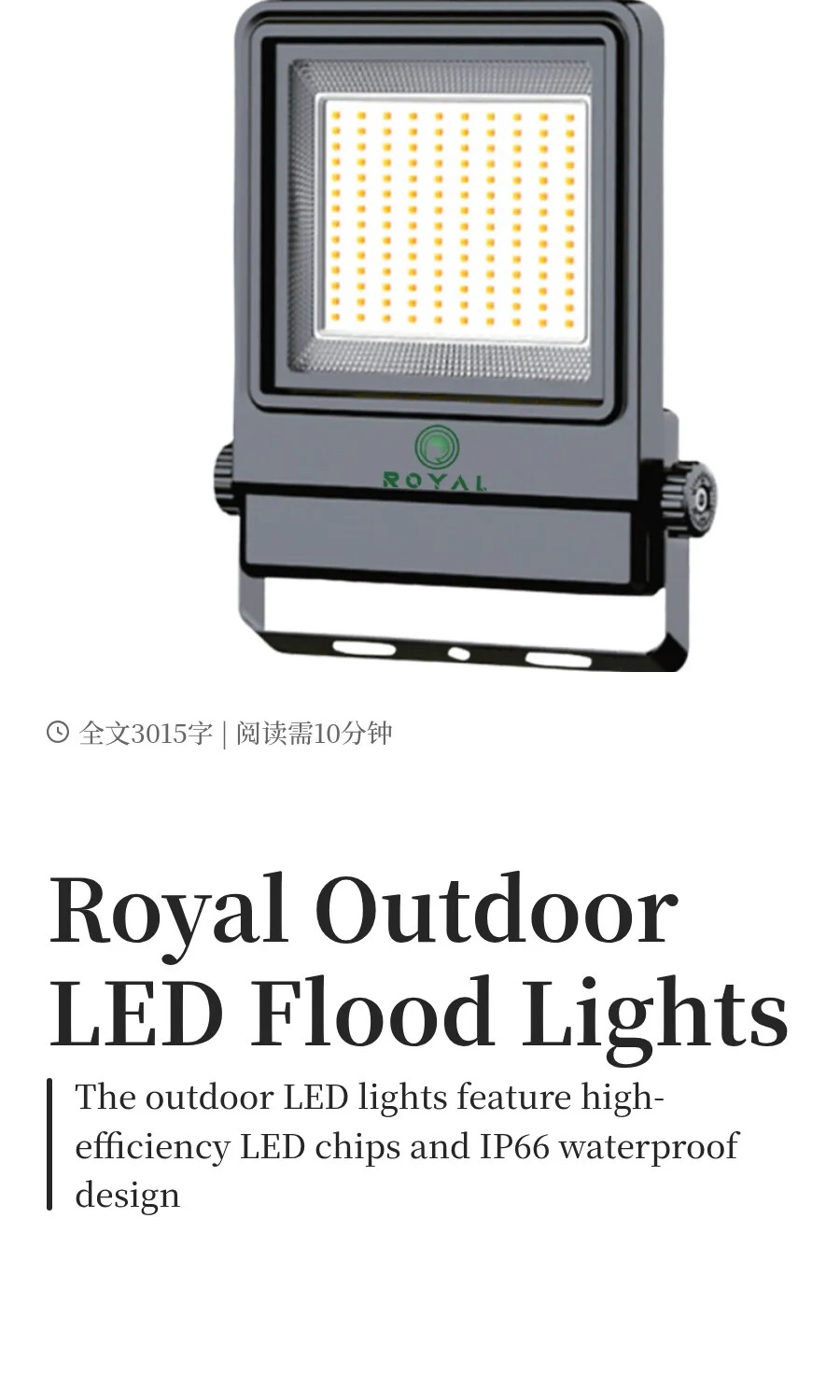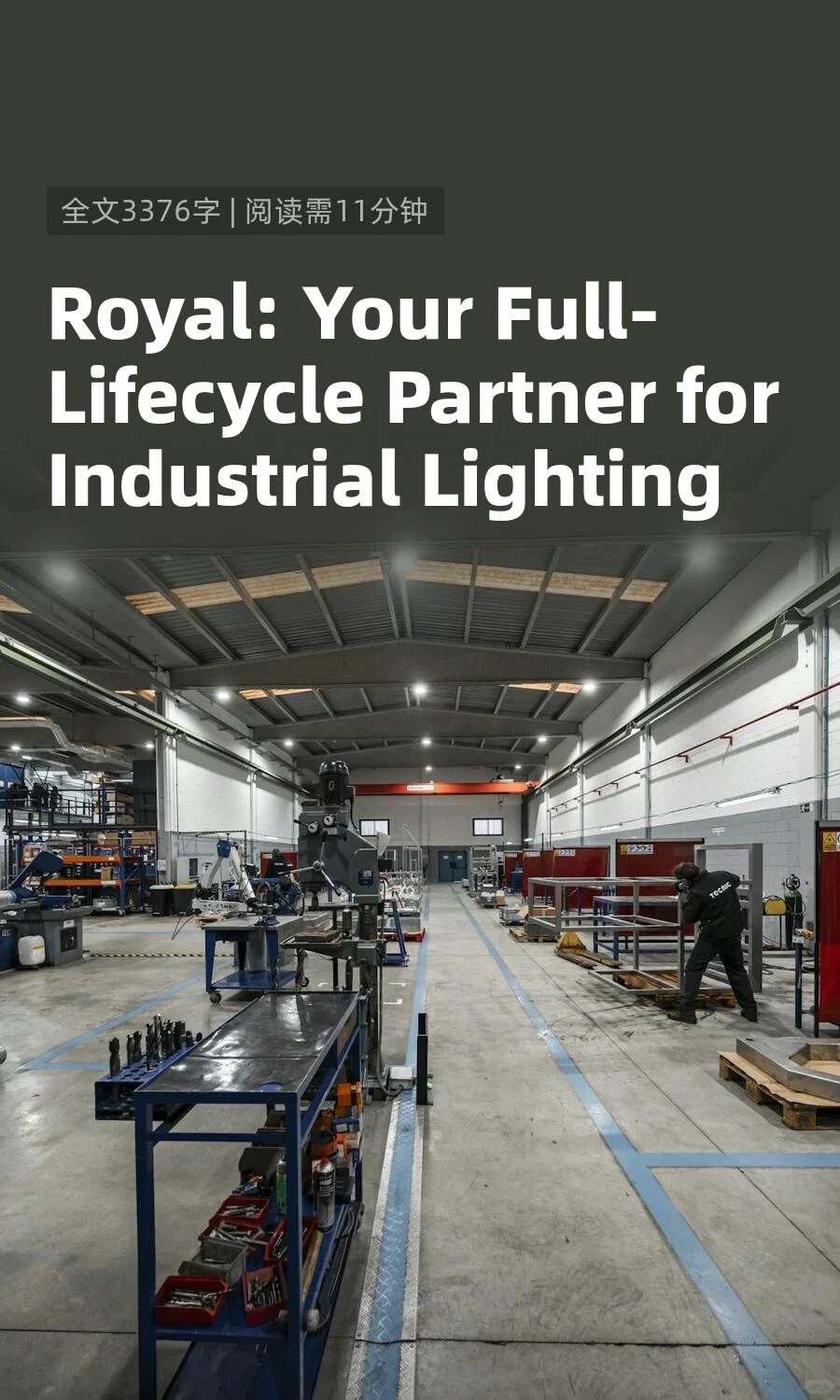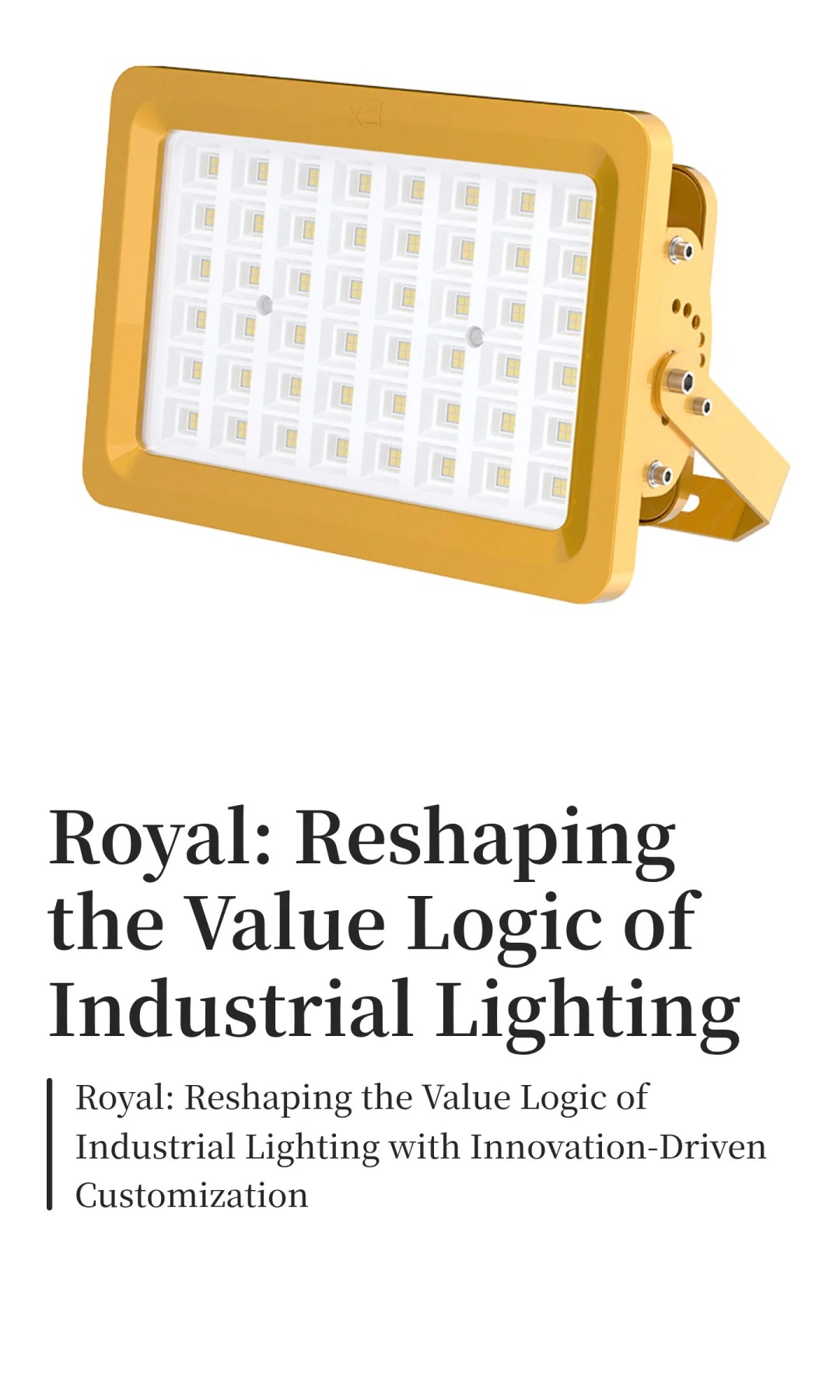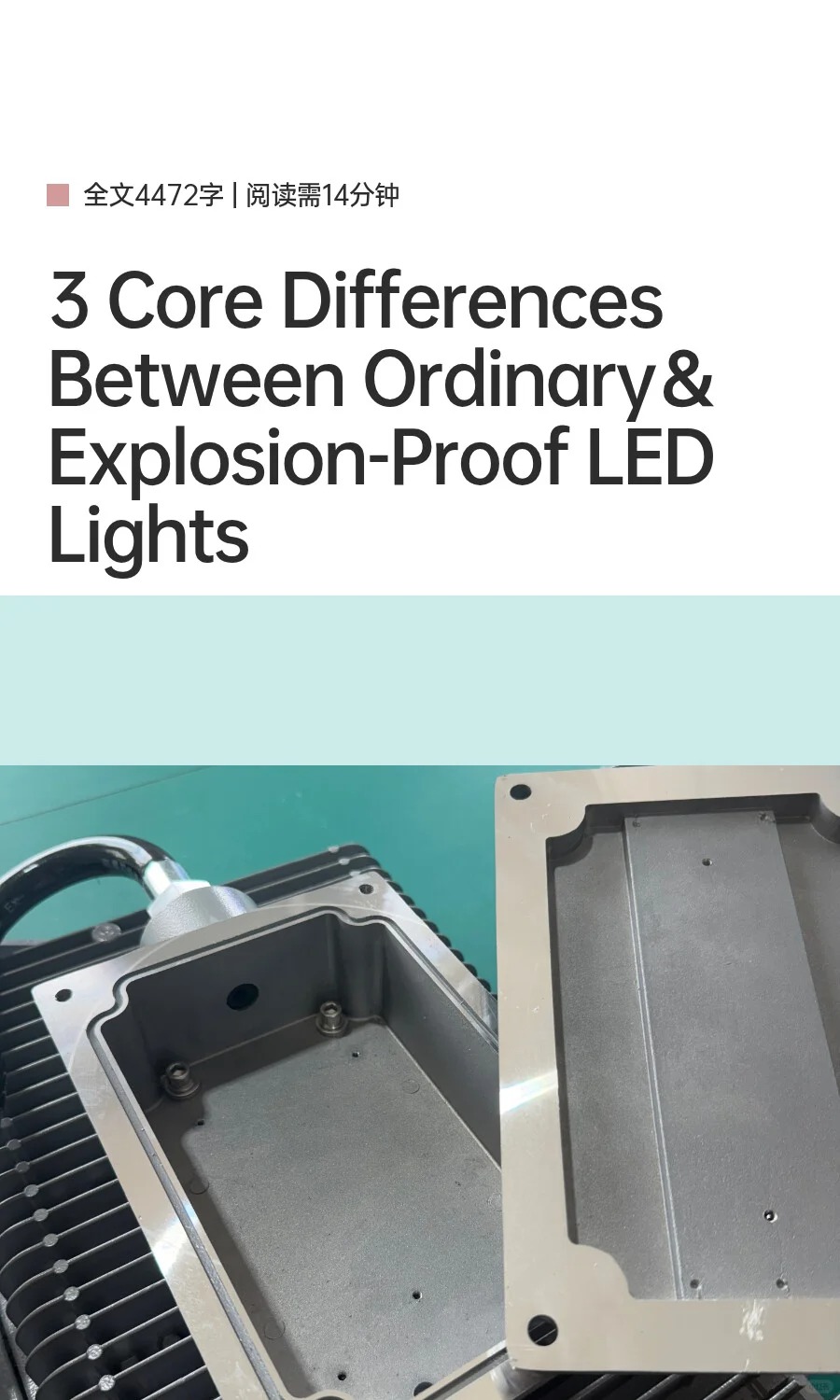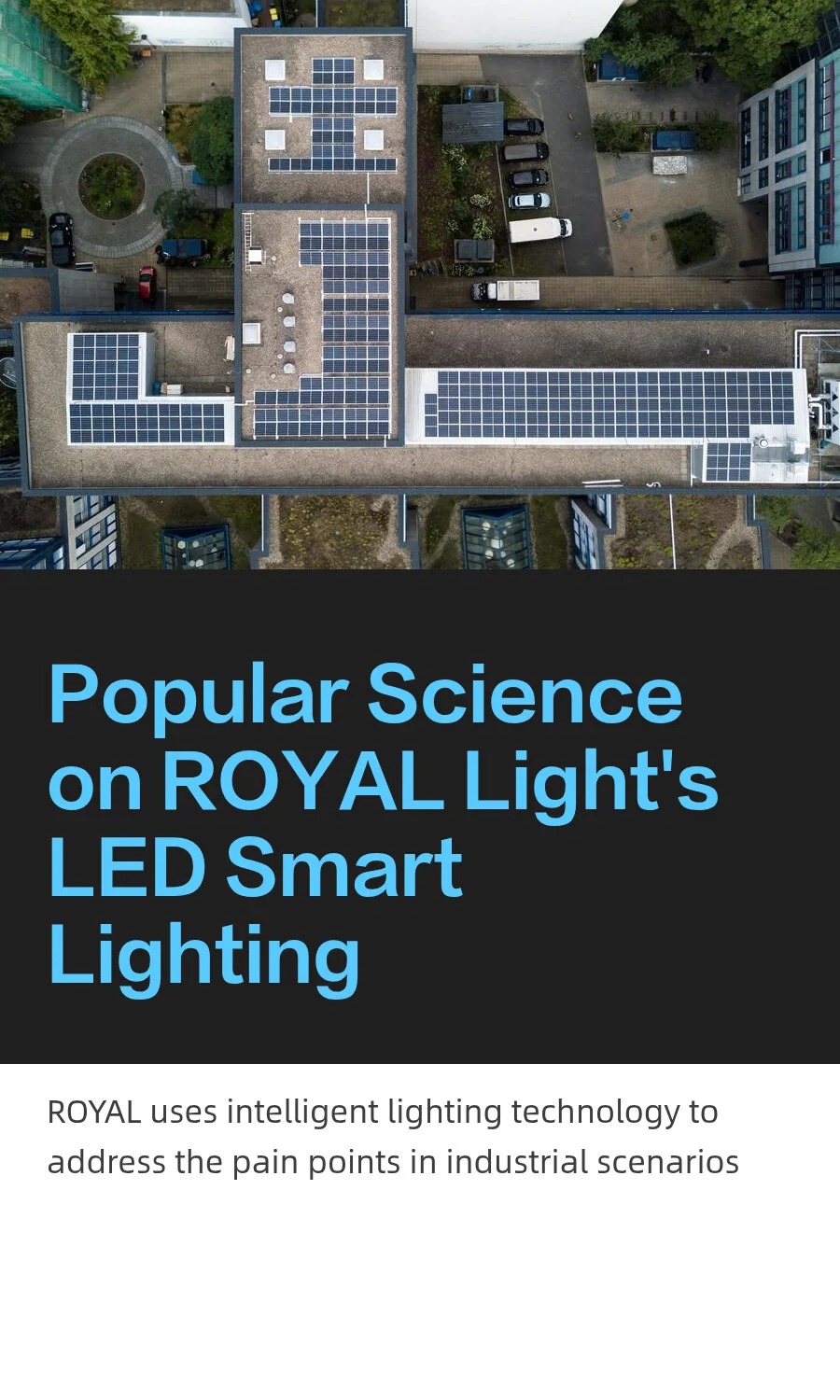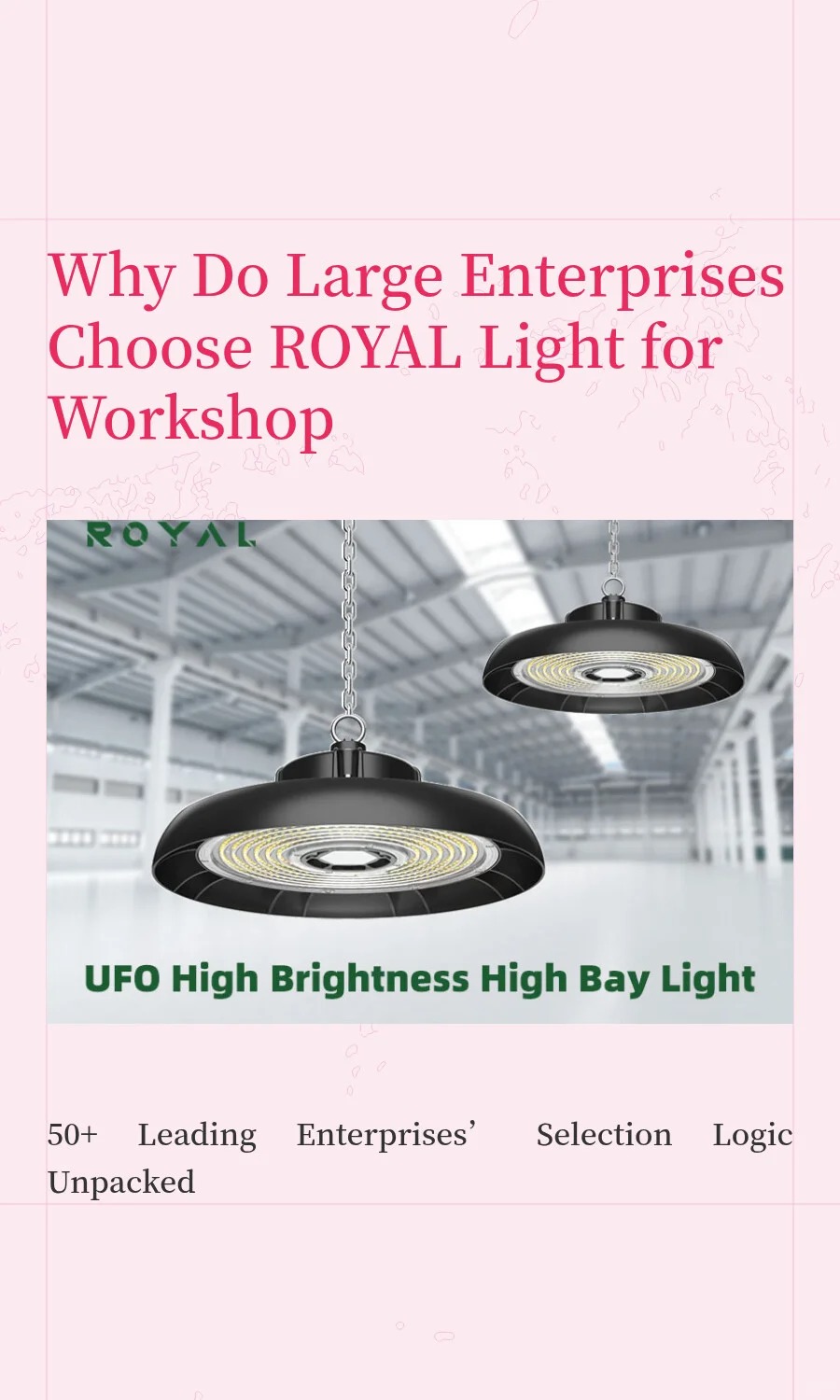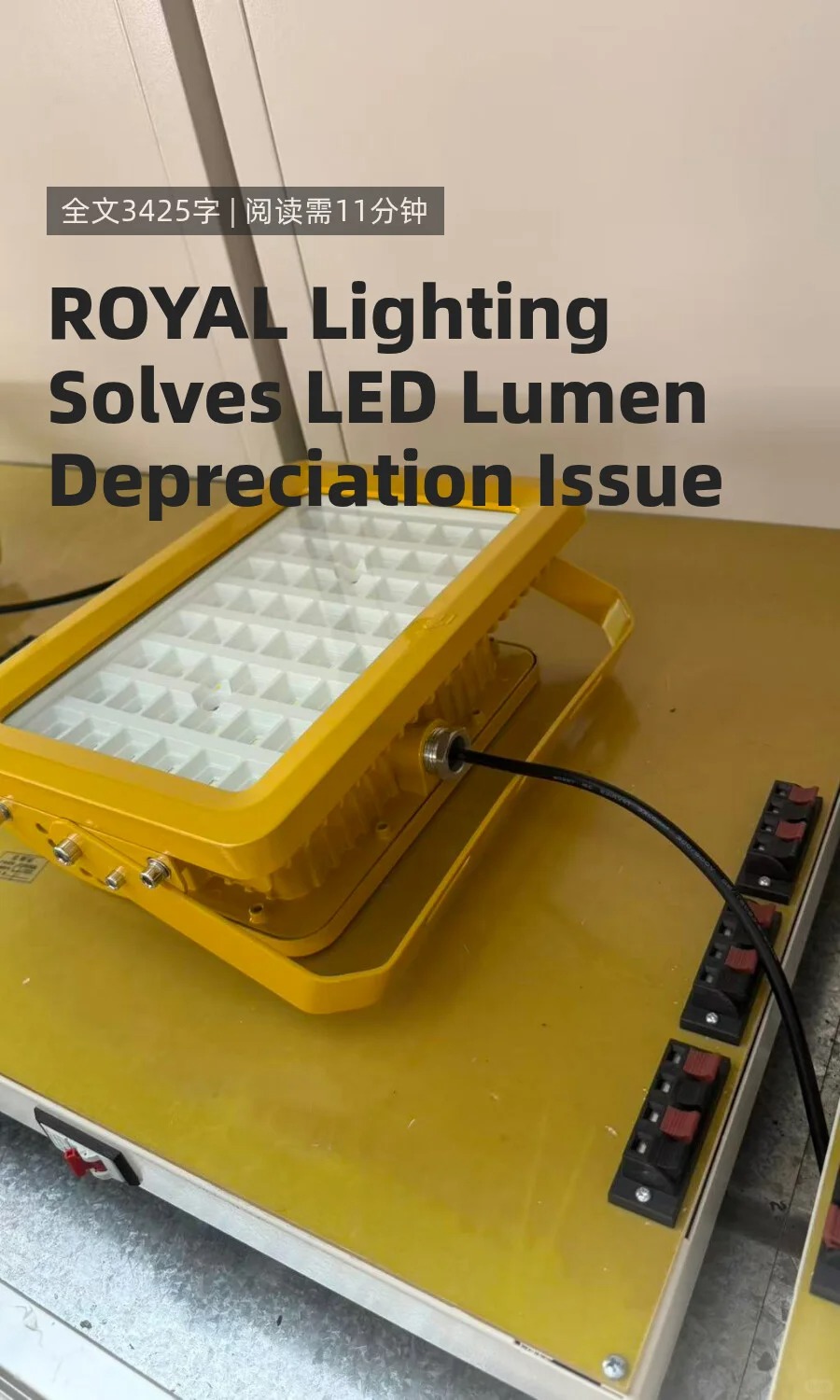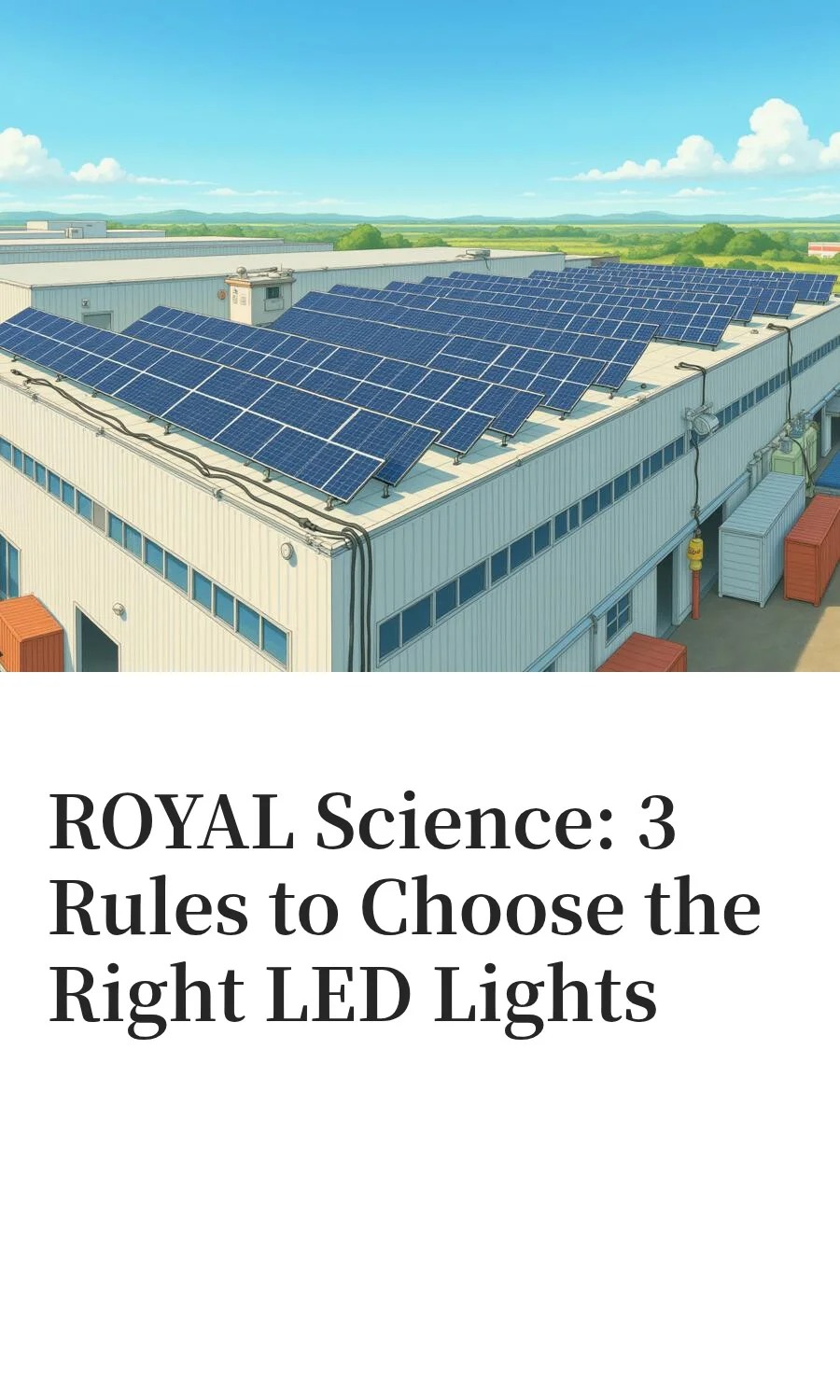As ROYAL, a company focused on global LED lighting solutions for 12 years, we’ve found that many customers share a common confusion: clearly, they bought "high-brightness LEDs," yet these lights fail to show details in workshops, make fresh produce look discolored in supermarket fresh sections, or break after just six months of outdoor use. The core issue isn’t poor LED quality—it’s that the LEDs are the wrong fit for the scene. Today, drawing on over 300 customer cases, we break down the 3 core rules for LED scene adaptation to help you avoid the trap of "bright enough but not useful enough," while showing how ROYAL customizes solutions for different scenarios.
Many factories only focus on "wattage" when purchasing industrial LEDs. For example, they might choose a 100W high-bay light over an 80W one, assuming it’s brighter—only to end up with some areas being overly bright (causing glare) and others remaining dark. This happens because they overlook the importance of illuminance uniformity.
Industrial workshops (especially for mechanical processing and electronic assembly) need to meet illuminance of over 300lux + uniformity of ≥0.7 (referencing GB 50034-2013 Code for Design of Building Lighting). This avoids visual fatigue among workers and missed defects during quality inspections due to uneven light.
1. Adaptive Optical Design: Adopting a "bat-wing light distribution curve," the light coverage is 20% wider than that of ordinary high-bay lights. For a 100W model in a 10-meter-high workshop, the illuminance uniformity can reach 0.8, with a brightness difference of no more than 15% between corners and the center.
2. Oil Resistance + Vibration Resistance: The lamp body features one-piece die-cast aluminum construction with a nano anti-oil coating—machine oil in the workshop can be wiped off easily with a cloth. With a vibration resistance rating of IP65, none of the lights in stamping workshops have suffered from soldering detachment due to vibration after 3 years of use.
3. Custom Wattage Based on Needs: We recommend appropriate wattages according to workshop height (e.g., 80W for 8-meter heights, 120W for 12-meter heights). This prevents "wasting electricity with excessive wattage" or "insufficient brightness with low wattage."
When choosing industrial LEDs, don’t just ask "how many watts." Request an illuminance simulation diagram from the supplier to confirm whether your workshop’s dimensions can achieve uniform illuminance.
Supermarket owners often complain: "The LEDs are bright enough, but meat in the fresh section looks gray, and product labels on the top shelves are blurry." The problem lies in choosing the wrong color rendering index (Ra) and beam angle.
· Fresh sections (meat/vegetables/fruits): Require a high color rendering index of Ra≥85 to restore the true color of ingredients (e.g., making fresh meat look rosy and fruits/vegetables look vibrant), boosting customer purchase intent.
· Shelf areas: Require a narrow beam angle of 15°-30° to focus light on products and labels, avoiding blurriness on top-shelf labels caused by scattered light.
1. Fresh Section Spotlights: Use high-color-rendering LED chips (Ra90), which better restore ingredient details than ordinary LEDs with Ra80.
2. Shelf Layer Lights: Customized with a "20° narrow beam angle," the light shines vertically on the middle and top shelves, achieving 250lux illuminance on labels—3 times clearer than ordinary LEDs with a 45° beam angle. With a power consumption of only 8W, they save 50% more electricity than traditional shelf lights.
3. Energy-Saving Linkage Design: Combined with supermarket business hours, we provide a "time-period dimming" solution (e.g., 100% brightness during morning peak hours, 70% brightness during midday lulls).
Ask the supplier for a color rendering index test report and prioritize products with Ra≥85. For shelf lights, confirm the "beam angle" to avoid buying "wide-angle floodlights" by mistake.
The most common issues with outdoor LEDs (e.g., parking lot lights, campus street lights) are "water damage in rain," "fast light decay under summer sun," and "failure to turn on in low winter temperatures." These happen because the LEDs are not adapted to extreme environments.
Outdoor LEDs need to meet protection class of IP65 or higher + resistance to extreme temperatures (-30℃~60℃) + UV resistance to prevent lamp aging and circuit failures caused by rain, temperature changes, and UV rays.
1. Enhanced Protection: Outdoor floodlights/street lights adopt a "dual-seal design" (potting compound on the LED board + silicone gasket on the housing), achieving a protection class of IP66—3 times more resistant to rainwater penetration than ordinary IP65 LEDs.
2. Weather-Resistant Materials: The lamp housing is made of ADC12 die-cast aluminum with a fluorocarbon coating, offering 5 times better UV aging resistance than ordinary spray coatings. In the high-temperature, sun-drenched environment of Hainan, the light decay is only 10% after 5 years (compared to 30% for ordinary LEDs).
3. Low-Temperature Startup Design: The driver power supply has a built-in "low-temperature preheating chip," allowing the light to turn on normally within 3 seconds at -30℃ (common in Northeast China’s winter), avoiding the "slow startup and frequent flickering" issue of ordinary LEDs.
When choosing outdoor LEDs, confirm the protection class is "IP66" (resistant to powerful water jets) rather than "IP65" (only resistant to splashing water). Ask the supplier for a high/low-temperature resistance test report to avoid issues in extreme climates.
Good LED lighting isn’t about "higher wattage or brighter light being better"—it’s about being exactly suited to your scene’s needs: workshops need "uniform illuminance," supermarkets need "true color rendering," and outdoor areas need "durability and resistance."
ROYAL — Let every LED be the perfect fit for your scene; let every lighting upgrade be more than just "changing lights"—it’s about "improving efficiency and saving electricity."
